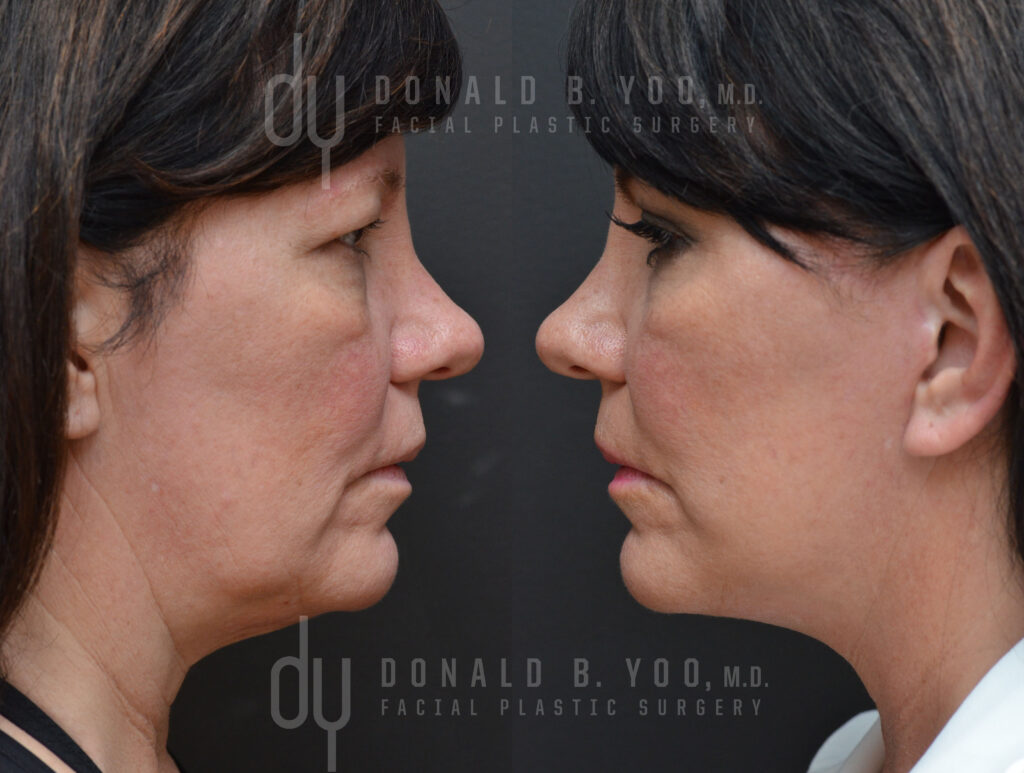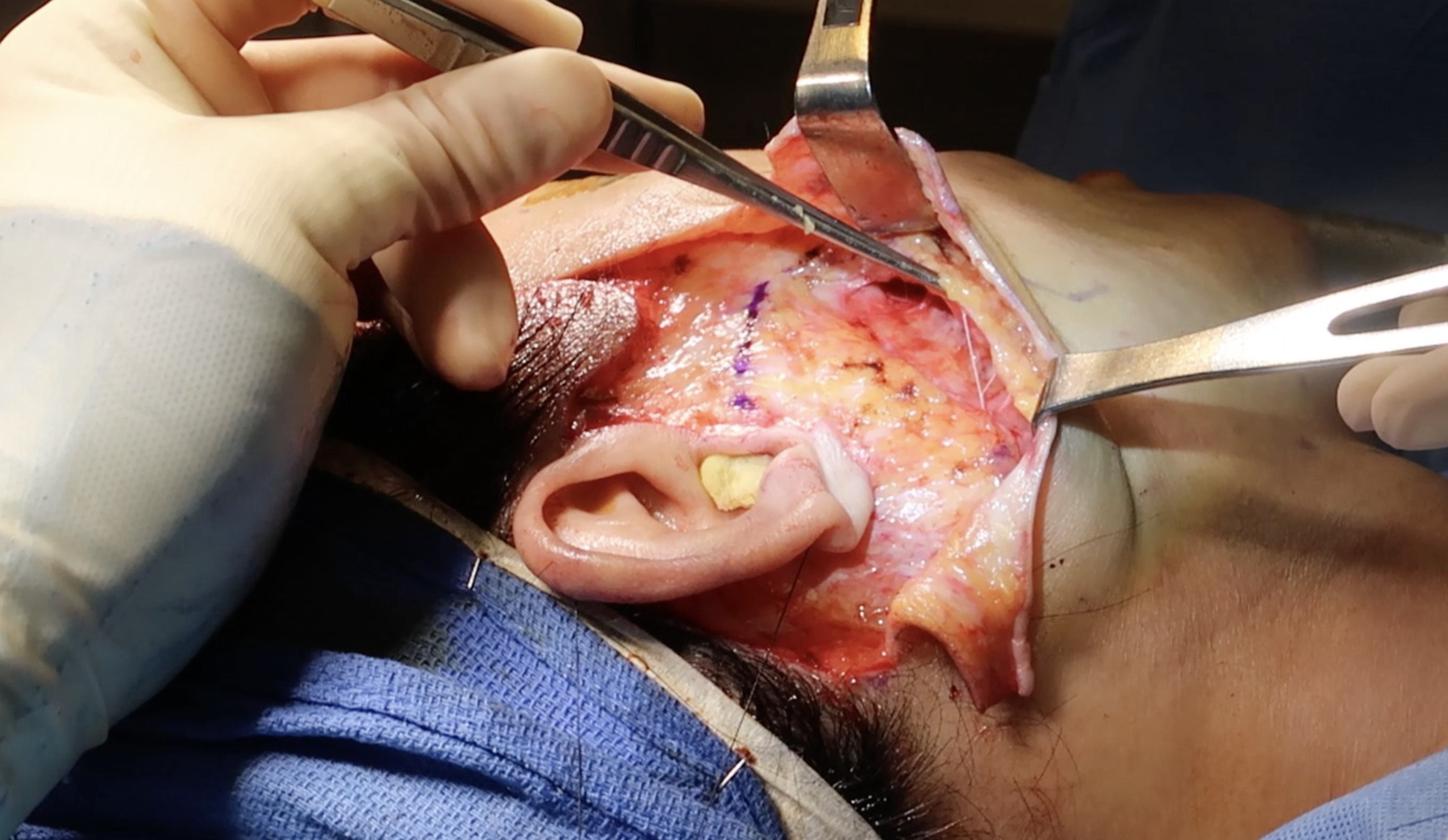
During a traditional SMAS facelift, the skin and subcutaneous tissue is elevated from an incision designed around the ear in a single layer. The layer deep to the skin and subcutaneous fat is the SMAS, or superficial musculo-aponeurotic system, a term coined by plastic surgeons Mitz and Peyronie in the 1970s to describe the anatomic layer investing the muscles of facials expression. For a traditional facelift, the SMAS layer is either plicated (oversewn) or imbricated (a small portion resected and the ends re-approximated) and the skin pulled along the incision to create a lift. This approach would distribute some of the tension of the lift along the SMAS layer, but a significant portion of this force vector would fall on the skin incision line itself.

During a deep-plane facelift, the skin and subcutaneous fat is elevated in one plane, and then as the dissection proceeds anteriorly towards the midline of the face and neck, the dissection descends under the deep-plane (SMAS layer) to create a thicker, more robust flap consisting of skin, subcutaneous fat and SMAS combined. The SMAS is mobilized and secured to provide the lifting for the facelift, with minimal reliance on the skin itself, thus allowing for a tension-free closure of the incisions. This results in a less “pulled” and more natural appearance, more durable, long-lasting results, and reduces the amount of downtime due to bruising and swelling.